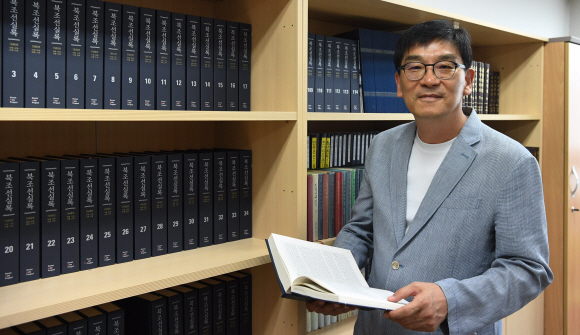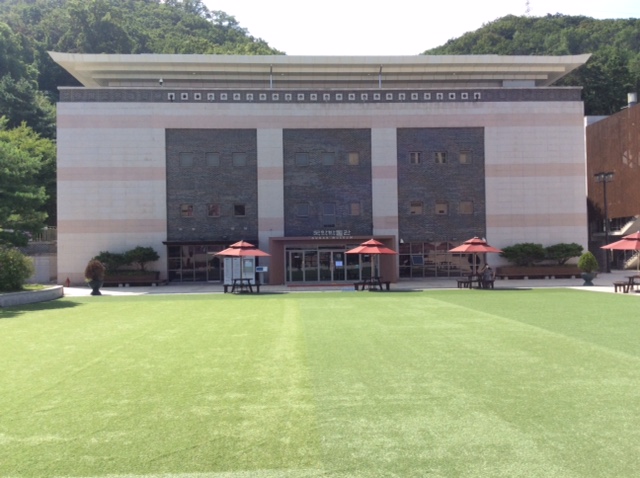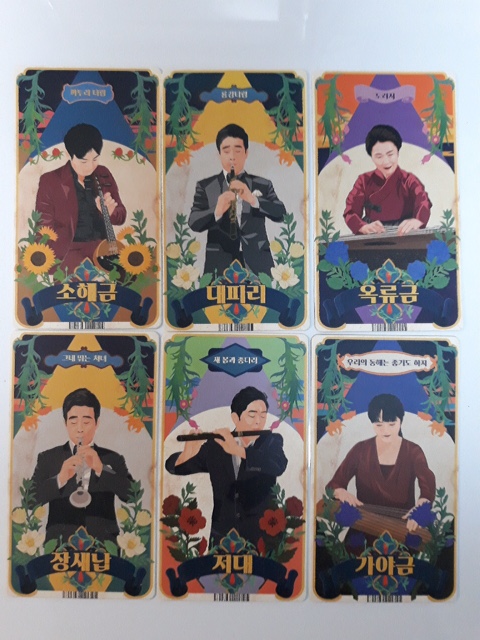Peter Moody
Researching sources on North Korea (Democratic People’s Republic of Korea, DPRK) is a lot like running around in a maze. To take the analogy further: it’s as if you’re a rat in a maze where the cheese is everywhere but you don’t have a sense of smell.
As anyone who has looked at the captured North Korean documents from the Korean War at the National Archives annex in Maryland can tell you, it is an experience that is both exhilarating and enlightening on the one hand and frustrating and daunting on the other. With such a diverse array of historical materials, there is much potential to piece together an illuminating historical narrative. At the same time, the archival catalogs only provide miniscule contextual information such as the general location where certain groups of materials were found. Therefore, one cannot help but wish there were a better guide and additional sets of materials to provide some orientation and cues for understanding how to make sense of it all.
In the summer of 2019, while conducting dissertation research at another site with a rich collection of materials, the Information Center on North Korea in Seoul, I was fortunate to come across a remedy to the challenges of studying early DPRK history. It was an encyclopedic set of volumes first introduced in 2018, namely, the resource compilation called the Bukjoseon Sillok (북조선실록)—which can literally be translated The Annals of North Korea. The publication of this set, along with the 2019 opening of a large number of DPRK primary sources at the National Gugak (Korean Traditional Music) Museum, have been welcome developments in my research into North Korean music.
As a way to introduce these new sets of resources on North Korea and reflect on their historiographical significance, I share my experience working with them below.
Bukjoseon Sillok
The Bukjoseon Sillok is a South Korean collection of North Korean documents carefully curated in a convenient and easy-to-read format. Professor Kim Gwang Oon at the University of North Korean Studies in Seoul launched this project with the aim of contributing to a more informed understanding of North Korea.
The name Bukjoseon (北朝鮮) is how North Korea refers to itself in relation to the southern half of the Korean peninsula, using “Joseon” (the name of the last Korean dynasty before Japanese colonization in 1910) in its official state name (조선민주주의인민공화국). Given its title, when I first saw the collection on the shelf, I genuinely wondered if the volumes were in fact a DPRK initiative to amass an extensive collection of records—an undertaking that would inevitably involve omissions so as not to contradict the official historical narrative. Alas, the Bukjoseon Sillok did not come from the North, but the story behind the collection is no less compelling.
I asked Professor Kim about his motivations for assembling the collection, and he shared with me how difficult it was for him as a graduate student researching North Korea when he had to locate sources and compare them alongside others to complete his dissertation. Although there are more materials from North Korea available than one might expect, he told me, it is sometimes perplexing to know where to begin when addressing a particular research question. All too familiar with such challenges, he wanted to arrange documents in a format that would make it more manageable for other North Korea researchers in their own inquiries.
Professor Kim and his research team started actively pursuing the project in 2015, and the first volumes were released in 2018. Today one can peruse through 114 volumes that cover much of the period from 1945 up through 1954, with an ambitious schedule to publish hundreds more. The volumes can be found not only at the Information Center on North Korea but at various universities across South Korea, as well as a few select universities across the world.

Kim Gwang Oon with a portion of the Bukjoseon Sillok
As for the Sillok (實錄) or Annals component of the title, Professor Kim conveyed to me the driving force behind his methodology: to recover the historiographical spirit of Korea’s past, previously obstructed by the Japanese colonial occupation and subsequent authoritarian regimes. Compared to other parts of the world, Korea has had a longstanding and deep tradition of keeping track of history, recently recognized internationally with the 1997 listing of its Veritable Records of the Joseon Dynasty (조선왕조실록) in UNESCO’s Memory of the World registry.
“China has also had a Sillok tradition, like the Sillok of the Ming and Qing dynasties, but these were compiled according to what the emperor wanted,” Kim stated. “On the other hand, the [official records] of the Joseon period were not according to what the kings wanted or preferred, but based instead on what actually occurred.”
Having an official history that was free from political interference was certainly a principle behind the compilation of the Annals not just for the Joseon court but for the Ming court as well. Motivated by a Neo-Confucian imperative to illuminate the functioning of the Mandate of Heaven through the accurate portrayal of events, the Annals were purportedly based on daily accounts and collected documents during an emperor or king’s reign and only compiled by professional historiographers of the court after each monarch’s death. Such principles waned on the Chinese continent after the Ming period witnessed two prominent cases of a massive revision of its Veritable Records. In Korea, however, the principles for maintaining neutrality largely remained intact as there were harsh punishments for historiographers who divulged the content of the records and steps were taken to check the political interference that did occur.1
In aiming to portray as accurately as possible what internal DPRK sources said about historical developments on the Korean peninsula (often as they are occurring), Professor Kim is not exactly replicating the approach of Joseon-era Sillok. The documents he has included are largely publications from the Korean Workers’ Party that were available to many within North Korea and some outsiders as well. Still though, he shares with the Joseon-era historiographical legacy the underlying principle of limiting interference by political authorities in the representation of historical materials.
With the Annals format, the DPRK sources the Bukjoseon Sillok includes are organized chronologically not in terms of when they were written or published but in terms of when the contents are stated to have occurred. As a result, one can find different accounts of the same event on the same set of pages. Since most of the sources included were published in close temporal proximity to the event in question, I found this overall organizational schema to be helpful for getting a clearer and wider frame of the context for notable historical events, as well as what they meant to the people participating in them and reporting on them.
As a practical matter, one of the greatest assets of the Bukjoseon Sillok is that its legibility makes it easier to glean information and accounts from Rodong Sinmun (로동신문), the official newspaper of the Korean Workers’ Party, and its predecessor publication, Jeongro (정로) in the early post liberation period. Early DPRK publications contain Chinese characters and are printed vertically from right to left, which is a challenge to decipher in itself, but a greater problem is that they are often only available on computer databases as digitized versions that are of poor quality, sometimes difficult and often impossible to read.
Articles from the Rodong Sinmun make up most of the texts in the collection that I have used, but one can also find rare sources, such as an extended report translated from Russian into Korean in Volume 1 about the state of affairs in the northern half of the Korean peninsula compiled by Soviet officials as the military was withdrawing from the North in 1948. According to the compiler Kim Gwang Oon, the aim of this report was to present a positive image of the Soviet postwar occupation with claims that democracy had been achieved thanks to the military government’s presence.
While it is absolutely critical to be aware of such motivations by both the writers of the sources and the institutions they represent, it is also important to take account of Kim Gwang Oon’s own role in terms of what he chose to include and exclude from the collection. In the discussion following a lecture he gave, he acknowledged the potential for bias, saying that he found himself primarily choosing historical materials that were about developments of national significance. Although he has a research team involved in decoding and compiling the texts, he chose to be the sole arbiter of selecting which materials went into the collection to keep the selection bias consistent throughout the rotations in the research team and staff.
In my own findings from the collection, numerous reports on Soviet-North Korean cultural exchange have helped me learn which aspects of Soviet art and culture resonated with North Korean officials tasked with administering cultural affairs. Minutes of the meetings among these cultural officials as well as reports on the founding of cultural institutions like national theaters have allowed me to piece together a tentative timeline and mental map of the early DPRK music activities and the structural role they had on contemporary and subsequent cultural and social phenomena. An unexpected source I found was a wanted ad in the Rodong Sinmun for musicians, indicative of a labor demand in the cultural sector that was perhaps met to some degree by the wave of prominent Korean traditional musicians that migrated to the North from the South in the midst of the Korean War.
The North Korean Music Resource Room
While the Bukjoseon Sillok has been instrumental in giving me a sense of the overall context for the production and dissemination of DPRK music, the North Korean Music Resource Room housed inside the National Gugak (Korean Traditional Music) Museum has been a critical site to bring the core components of my research project to fruition. In the summer of 2020, as part of a number of initiatives related to North Korean music, the National Gugak Center (which administers the museum) unveiled an extensive collection of more than 15,000 printed and audiovisual materials. Accompanying the opening of this collection was a temporary exhibition on DPRK music with listening stations, DPRK musical instruments on display, and an interactive miniature stage of the national opera “Tale of Chunhyang” first performed by the Pyongyang Art Troupe in 1989.

The National Gugak Center, which houses the North Korean Music Resource Room and hosted the exhibition on DPRK music, is located in the Seocho-gu district of Seoul and is adjacent to the Seoul Arts Center Complex

In addition to displays of North Korean instruments, the National Gugak Center DPRK music exhibition offered their recordings that could be heard by placing informational cards, such as those above, into a digital reader.
When I asked about the origin of the North Korean Music Resource Room, staff researcher Park Hee Jeoung told me that the idea took root six years ago when the National Gugak Center hired a researcher specializing in North Korean music. At this occasion, he and the other staff members decided it would be a worthy endeavor to integrate the study of North and South Korean music to prepare for a more unified Korea. Park professed that implementing such a vision could help recover some degree of cultural homogeneity that was lost from the division, as well as familiarize the South Korean public to the context behind the notable differences in North Korean music.
Upon making a reservation and arriving at the research room, visitors will find a helpful computerized database with which they can search through the print and audiovisual materials. Making copies of pages from printed work is permitted as long as researchers bring their own paper and return the copies within two weeks. In order to access the collection, one must also agree to use the material strictly for research-related purposes and not with the intent to disseminate propaganda. Such policies are coordinated by the Republic of Korea National Intelligence Service as an enforcement of the National Security Law.
Two sets of materials from the resource room that have proved most instrumental to my project are the DPRK periodicals Joseon Eumak (Korean Music) and Joseon Yesul (Korean Arts). These journals have descriptions and commentaries about particular works of music, party guidelines for compositions and performances, and abbreviated proceedings from the meetings of various administrative bodies dealing with music such the Central Committee of the Korean Composer’s Alliance (조선 작곡가 동맹). For the convenience of researchers, the National Gugak Center has compiled a catalog of article titles and page numbers from both Joseon Eumak and Joseon Yesul in a searchable pdf format that is available online. The catalog also includes background information about some of the journal contents and indexes of song titles, themes, and musicians to facilitate research undertakings.
Additionally, there are numerous sheet music publications, many of them dating back to the 1950s and 1960s. Some of them include an interpretation of the song and/or background of the composers. After getting my feet wet with materials like these, I found myself alternating from viewing descriptions of pieces of music, locating the parts of the scores in the descriptions, and listening to recordings of the early pieces of DPRK music. The only unfortunate (and perhaps unavoidable) part of the collection is that many of the CD copies of older recordings do not list any date, so one can only make inferences on the recording date based on the songs included and what they sound like. Nevertheless, it is essential for researchers to hear the music and not merely read about them even if the circumstances surrounding the recordings remain opaque.
One of the works of music I have been looking at is “A Rich Harvest Visits Chongsan Plain” (청산벌에 풍년이 왔네) that was first composed as a choral work in 1960 later arranged in 1970 for a baehap or mixed orchestra of Western and Korean reformed instruments. A 1962 sheet music of the work emphasized its distinctly modern features of incorporating Korean instruments and a modulation scheme that “jumped with ease from key to key.”
The Projects Continue
As endeavors to broaden the understanding of DPRK history and culture, the initiatives of the Bukjoseon Sillok and the North Korean Music Resource Room are ongoing.
For the Bukjoseon Sillok, Professor Kim told me that the printed volumes were only the first stage. The next step is to have a computer database at one or several locations where one can do keyword searches not only of the documents contained in the volumes but the additional sources that he did not have space to include. Following that, he plans to carry out big data analyses of the resources collected in order to “maximize the knowledge and information” that can be derived from them.
An upgrading process also continues at the National Gugak Center, as a new index of article titles from the 1990s periodical Eumak Segye (Music World) is currently under construction and is scheduled to be released in the fall of 2021. This journal may be of particular interest to South Koreans because it was run by the DPRK music institute named after Yun Isang, a former South Korean citizen and Western German national who helped facilitate exchanges between North and South Korean musicians. In addition to informing me of this coming attraction, National Gugak Center researcher Park Hee Jeoung shared with me his hopes that a less restricted research environment could result in more published works that allow more people to understand aspects of cultural history in the North such as the creation of revolutionary operas, the reform of traditional Korean instruments, and the proclivity in North Korea against preserving pansori, the extended storytelling performance genre that is renowned in South Korea today.
Much of these developments, however, are contingent on domestic and international political developments. The atmosphere for lifting restrictions and the appetite for cultural reconciliation, after all, has fluctuated in the past few decades depending on inter-Korean and regional geopolitical factors, and the priorities of each successive Republic of Korea (ROK, or South Korea) presidential administrations.
As Professor Kim Gwang Oon reminded me, the ROK can point to a number of aspects of its society that have democratized to a remarkable extent. Nevertheless, he added that there are still limitations when it comes to information on North Korea with arbitrary restrictions on who can freely access historical documents from the DPRK at any particular time. Providing more access to more people would not only interest South Koreans who have a stake in the matter, but it would also benefit foreign researchers, who along with South Korean researchers, continue to shape the world’s understanding of the DPRK.
Peter Moody is a PhD Candidate in East Asian Languages and Cultures at Columbia University. The research was supported by the 2020 Academic Exchange Support Program for North Korean and Unification Studies at the Institute for Far Eastern Studies, Kyungnam University.